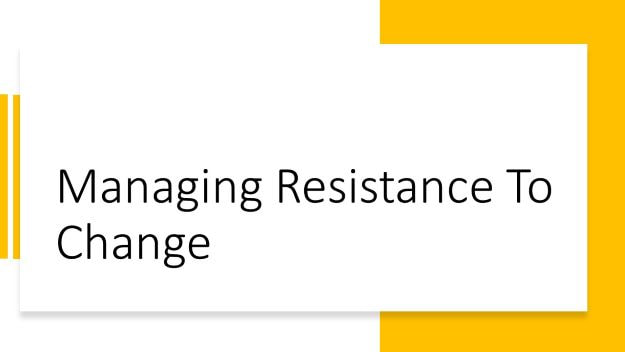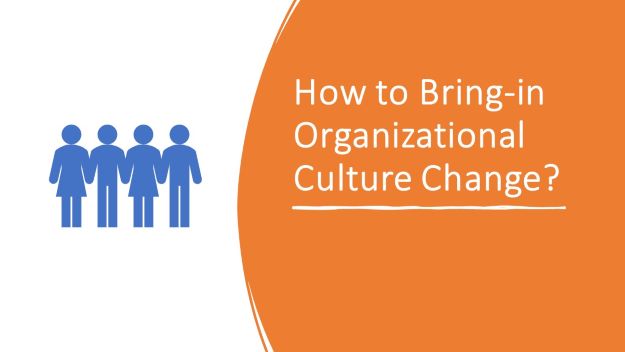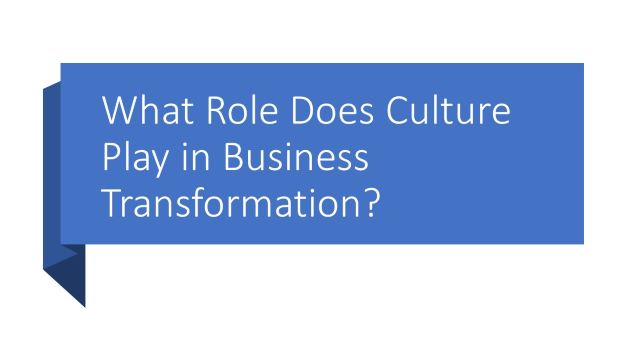But while managing change, business leaders also have to face and overcome resistance to change. The resistance to change can stem from anywhere within or outside the organization. For example, in a previous project, your team might have faced a resistance to change due to a few factors such as communication, control of their own jobs, and the power of the force field etc.
As an operational excellence expert and having successfully led over hundred end-to-end operational excellence projects globally, I have effectively dealt with managing organizational change in-depth. My mantra is to keep things simple and achieve big outcomes.
So, here are some tips for managing your team's resistance to change. Read on to discover how to handle different kinds of resistance to change. This article will highlight six main strategies to get your team on board with your change initiative.
6 Strategies to overcome employee resistance to organizational change-
Strategic communication plan
Often, leaders respond to the symptoms of resistance to change. But this will not solve the problem. By understanding the underlying causes of employee resistance, you will be able to navigate it more smoothly. Firstly, explain the reasons why the changes are necessary.
Communicate the reasons for the changes. Let your team members know what they stand to gain by these changes. Let them know what they can do to help you implement the changes. You can do this by sharing your reservations, but you must emphasize that your team needs the change to succeed. They must be involved in the process, too, so they need to understand the positive benefits. If you don't, the changes you've proposed may backfire.
Follow a strategic communication plan to succeed with your change initiatives. I’ve a separate blogpost on communication plan, you may check it out here.
Employee engagement
Among the most common methods used to implement change in small and large organizations is employee participation. But this approach can be problematic. First, you must understand the true nature of employee resistance. Employees typically resist changes in social settings, which are often an accompaniment to the technical changes. The problem stems from the staff specialists' blind spots, which are caused by their preoccupation with the technical aspects of new ideas. The good news is that you can use employee involvement to counteract the problems associated with employee resistance.
If the change you are proposing is a fundamentally different way of operating, then your employees will be much more likely to support it. In addition to making sure that employees are informed of the change, you should involve key employees in the process. They can help you build a bridge between your management team and your team. When communicating changes, however, be sure to share your reservations and ask for employees' involvement. In addition, make sure that employees understand what their roles are and how they will benefit from them.
Embedding a culture of Kaizen helps bigtime with increasing employee engagement, more so under the backdrop of an organizational change. Read more about Kaizen and How to use Kaizen for Increased Profitability and Organizational Excellence.
Also, check out this video to know more about how Kaizen can help your organization’s initiatives on increasing employee engagement.
Control of own jobs
One of the key strategies for overcoming your team’s resistance to change is to communicate clearly and consistently. Identify your audiences and highlight the benefits of the change. Employees often resist changes due to fear of losing their jobs, or the change affecting their working life. Although employees may be well-informed about the benefits of change, the "WIIFM" (what’s in it for me) factor still plays an important role. If they do not believe the changes will benefit them, they will resist.
If you want to increase employee satisfaction, your team's resistance to change is often one of the top factors preventing them from being engaged. But if you want to minimize resistance to change, you must take the time to ensure that employees have control over their own jobs. Achieve this by being transparent and providing direction, goals, and parameters. Ensure that your team has the power to make changes - practice effective delegation and set critical path points for feedback.
Force field analysis
The force field analysis is an effective tool for identifying the forces driving and restraining the adoption of change. It helps managers identify the levers that can strengthen driving forces and mitigate restraining forces to make changes stick. This approach involves the participation of all key stakeholders and requires some careful deliberation. However, it can be a great help to identify internal and external forces, which are often not visible.
To begin, write down what you wish to change in one sentence. Next, draw a force field diagram. Essentially, this consists of a sheet of paper with a line down the middle. On this sheet of paper, list both restraining and driving forces. Brainstorm for these forces and write down their strengths and weaknesses. Once you have identified these forces, you can begin to make a plan for how to implement the change.
Employee feedback
One of the best ways to overcome your team’s resistance to change is to identify the reasons behind their reluctance. While identifying the reasons can help you to overcome this obstacle, it's also important to realize that there are different reasons for people to be against a change. Then, you can tailor your approach to work through the problem. Using employee feedback to identify these reasons will allow you to overcome these obstacles.
The first key to breaking down the resistance to change is communication. Employees are happy to give you their opinion, and you can leverage that to your advantage. Identifying the root of resistance can help you steer the change project in the direction you want it to go.
Here's my blogpost citing the Best Practices of Giving Feedback to Your Subordinates and Peers and get their feedback; you might want to check it out.
Transparency
The vital step in overcoming your team’s resistance to change, is to identify and address potential sources of resistance. Hold workshops or discussions to ensure you understand employee concerns and goals. Listen to their objections to ensure you address the source of their resistance in a productive and respectful manner.
Communicate the benefits of the organizational changes to your team. They may be unaware of the reasons for their resistance, or they may have been blindsided by a plan they aren't familiar with.
One of the first ways to overcome your team’s opposition to change is to communicate the benefits of the changes to your team and employees. Make sure to create a safe environment for employees to voice their concerns.
- How to Bring in Organizational Culture Change
- What Role Does Culture Play in Business Transformation?
Practice active listening skills and listen for any possible misunderstandings. Communicate clearly and thoroughly your objectives and why the changes are necessary. This will help reduce resistance to change and ensure everyone is on board with the changes.
Related Reading:
- Change management tips and tools.
- Streamline processes and workflows with Gemba Walk.
- Top Ten Strategic Decision-Making Tools for Operational Excellence
Follow Shruti on Twitter, YouTube, LinkedIn
Categories: Change Management | Operations | Leadership
Keywords and Tags:
#operationalexcellence #changemanagement #strategicdecisionmaking #strategymanagement #strategiccommunicationplan #transparency #employeeengagement #forcefieldanalysis #employeefeedback #controlofownjobs #sixstrategiesofovercomingemployeeresistance #organizationalchange
























